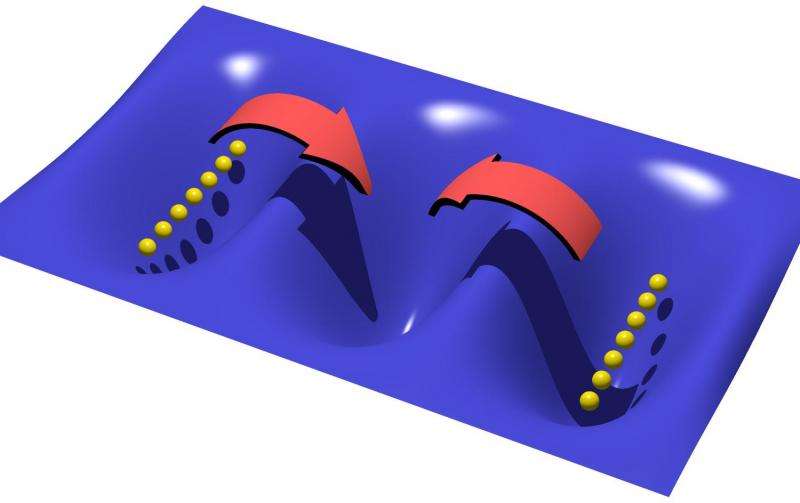Quantum-physical model system

Two researchers at Heidelberg University have developed a model system that enables a better understanding of the processes in a quantum-physical experiment with ultracold atoms. Using computer-assisted methods, Prof. Dr Sandro Wimberger and David Fischer from the Institute for Theoretical Physics discovered physical laws that point to the universal properties of this system. Their results were published in the journal Annalen der Physik.
Under certain conditions, small particles follow completely different physical laws than those we are accustomed to. "Observing such quantum-physical phenomena, however, is sometimes difficult and requires working with small and isolated systems and to investigate those. But perfect isolation from the environment is never possible, so external influences can easily destroy the fragile state of the quantum system," explains primary author David Fischer, a student of physics at Heidelberg University. For experiments in this field, keeping such disruptions under control is of great interest. "This control enables us not only to ensure the coherence of the system, but it can also be used selectively to effect special conditions," emphasises Prof. Wimberger.
Ultracold atoms filled into so-called potential wells have proven to be suitable test objects in many experiments. A special laser configuration is used to generate a barrier that locks the atoms in a small area. If multiple wells are then brought close enough together, the atoms have the ability to "tunnel" from one well into an adjacent one. They are still trapped in the wells, but can move from one well to another, according to the Heidelberg physicists. The temperature of the atoms, which is only just above absolute zero at -273.15 degrees Celsius, favours this quantum-mechanical behaviour.
In developing their model system, David Fischer and Sandro Wimberger reproduced an experiment carried out at the Technical University of Kaiserslautern. There, the behaviour of cold atoms in a chain of potential wells was investigated. The researchers filled the chain with atoms, emptied the middle well, and watched it refill with atoms from the other wells. "The results of this study suggest that decoherence, i.e. external interference, plays a critical role in this process. What is unclear is which microscopic processes the quantum system uses to interact with the environment," says David Fischer.
In their computer-assisted simulation of the refilling process, the two Heidelberg researchers tested various hypotheses and explored which processes actually influenced the behaviour of the model system. Among other things, they noticed that the time required for the refilling process varied based on the system parameters. This duration follows a power law, depending on the decoherence rate specified by the researchers. "In physics, this is often a sign of a universal behaviour of the system that is valid for all scales, hence simplifying the overall problem," states Prof. Wimberger.
More information: David Fischer et al. Models for a multimode bosonic tunneling junction, Annalen der Physik (2017). DOI: 10.1002/andp.201600327
Provided by Heidelberg University



















